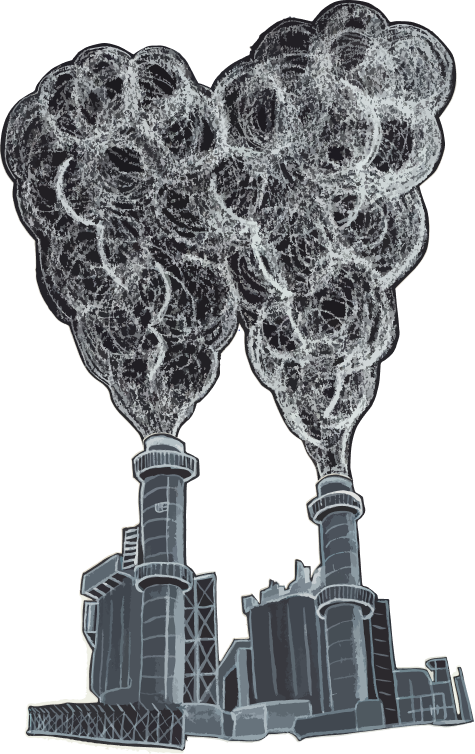West Virginia
Back to mapTo get to zero by 2050, West Virginia must cut climate pollution by
4.1 million metric tons of CO2 equivalent a year.
Emissions in West Virginia
Million metric tons of carbon dioxide equivalent (MMTCO2e) emissions
This is how we're going to do it.
- Boilers and furnaces with heat pumps
- Gas stoves with induction ranges
- No-till farming to keep CO2 in the soil
- Capturing methane leaks from landfills
- Capturing CO2 to make emissions-free concrete
- Burning green hydrogen to make emissions-free steel
- Plugging methane leaks from gas pipelines
Decarbonize Our Buildings
3% of West Virginia's climate pollution comes from buildings.
We burn fossil fuels to heat our air, water, and food.
To cut this pollution...
Let's electrify our heat!
We'll replace...
...in all of West Virginia's 1.1 million buildings.
In fact, 46% of buildings in West Virginia are already fossil fuel free!
That means we only need to electrify the remaining 565,000 buildings in West Virginia. That's around 20,000 per year.
That cuts 3% of the pollution.
Decarbonize Our Transport
11% of West Virginia's pollution comes from cars, trucks, trains, and planes.
But mostly from cars.
To cut this pollution,
your next car must be electric.
Or consider going car-free with public transit, bikes/e-bikes, car share, or other alternatives!
Then, we'll electrify all 509,000 cars and trucks in West Virginia!
There are 509,000 vehicles in West Virginia and 600 are already electric (0.1% of the total).
We need to electrify the remaining 508,000 vehicles. That's around 18,000 a year.
That cuts 11% of the pollution.
Decarbonize Our Power
52% of West Virginia's pollution comes from burning coal, gas, and oil to make power.

To cut this pollution...
Put solar panels on your roof!
Then, we'll replace all fossil fuel power plants with solar and wind farms.

...and find good jobs for those workers.
Current Fossil Fuel Power Plants in West Virginia
10 coal plants
John E Amos
Putnam County
2,933 MW
Harrison Power Station
Harrison County
2,052 MW
Mount Storm Power Station
Grant County
1,681 MW
Mitchell (WV)
Marshall County
1,633 MW
Pleasants Power Station
Pleasants County
1,368 MW
Mountaineer (1301)
Mason County
1,300 MW
Fort Martin Power Station
Monongalia County
1,152 MW
Longview Power
Monongalia County
808 MW
Grant Town Power Plant
Marion County
96 MW
Morgantown Energy Facility
Monongalia County
69 MW
4 gas plants
Ceredo Generating Station
Wayne County
519 MW
Big Sandy Peaker Plant
Wayne County
353 MW
Pleasants Energy, LLC
Pleasants County
344 MW
Axiall Corporation Natrium Plant
Marshall County
123 MW
But wait!
It's not enough to replace our power plants with wind and solar farms.
To power our electric cars and buildings, we need 2x the electricity we have today!
In all, we'll need to build 4,000 MWs of wind and 5,000 MWs of solar.
Since West Virginia already has 3 megawatts of solar power generation and 185 megawatts of wind power generation, that's 140 Megawatts of wind capacity AND 178 Megawatts of solar capacity a year we need to build.
That cuts 52% of the pollution.
And gives us zero-emissions power we need to eliminate pollution from buildings and cars!
Other Emissions
The last 34% of West Virginia's climate pollution comes from other sources...
This includes farming, landfills, industry, and leaks from gas pipelines.
There's no one solution to solve these problems, but there are lots of great ideas:
Ready to do your part?
Learn how to electrify your own machines and pass local policy to electrify the rest
Take Action